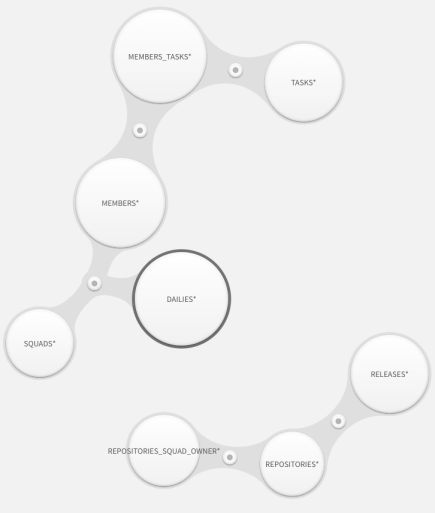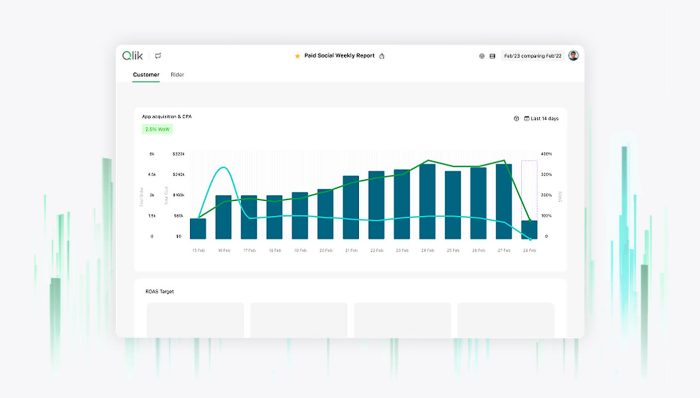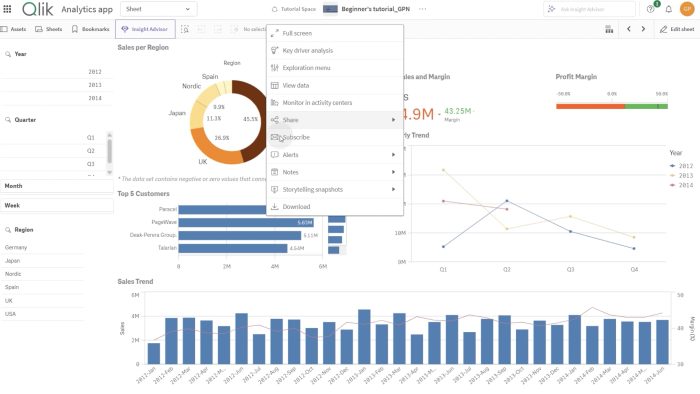- Home
- /
- Qlik Cloud September 2024: what’s new
August and September 2024 updates are included below.
1. General styling of bundled charts
The remaining charts in the visualization and the dashboard bundle are getting general styling including font styling of titles, background color and image options and border and shadow settings.
The charts impacted by this change are
2. Tabular reporting template management – Changing source app at time of template upload
An optimization has been introduced to allow a template to be connected to the source app at time of upload. Previously, it had to be done by creating the connection in the Qlik add-in for Microsoft Excel. For example, if a report developer knows that a template is compatible with an app, and a copy of that app is available in another space or tenant, the report developer can upload the template used in the source app directly to the alternate version of the app and the connection will be created during the upload. Note: Not supported in Cloud Government.
3. Search and replace in expression editor
The usability of the expression editor has also been improved by adding a confirmation dialog when closing with unsaved changes.
4. Expressions in field labels
You can now have expressions in field labels for drill-down and cyclic dimensions. This lets you for example enable translation of labels in multi-language apps.
Creating a drill-down dimension
5. Layout container improvements
Charts are now highlighted in the container when they are selected in the list in the property panel.
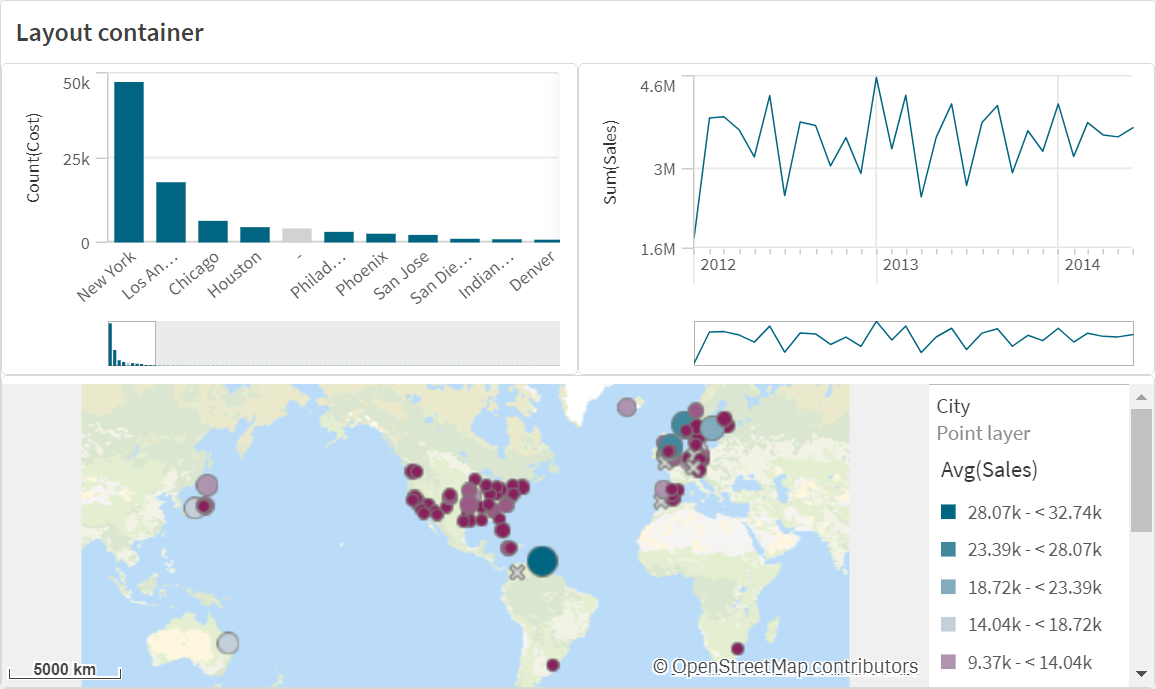
6. Removal of Sheets button
Now when the transition to the new sheet navigation is complete, the Sheets button is going away. Use the Assets button on the left side instead.
7. Combo chart improvements
Based on feedback from our customers we’re improving the combo chart and adding labels to markers and a setting to toggle the grid.
8. Model Approval Workflow
Model Approval Workflow enables customers to “opt-in” for greater control over the activation of machine learning models when they are deployed on Qlik Cloud. This is enabled through the control of custom security roles.
9. Change to platform navigation
As announced on July 9th, the new platform navigation was released as an opt-in for a limited time. Today, it has become a default for all tenants without an opt-out.
This change brings significant user-experience improvements, such as more ease of navigation and finding your way around the platform, with a common anchor point in the waffle menu in the top-left corner throughout the whole platform.
This also includes the introduction of Activity Centers, with areas focused on consuming analytic insights and creating analytics with a new Insight Advisor Chat experience.
Qlik Cloud Analytics activity centers
Qlik Talend Data Integration activity center
Innovation blog (Qlik Community)
10. Print, subscribe, snapshot, and monitor with the new Pivot table
The new pivot table is now getting support for download as image and PDF, storytelling, subscriptions, and monitoring. We know many have been waiting for this and we’re glad to announce general availability. The new tables are rolled out with new features incrementally and will soon be moved from the visualization bundle to the native chart section
1. Enhanced support for metadata changes in replication and lake landing tasks
Previously, when a metadata change occurred, all tables would be dropped and recreated even if the metadata change did not affect all tables. Now, only the changed tables will be dropped and recreated, thereby improving performance.
2. Re-designed view for transform tasks
A new view is now available for transform tasks, providing visible lineage.
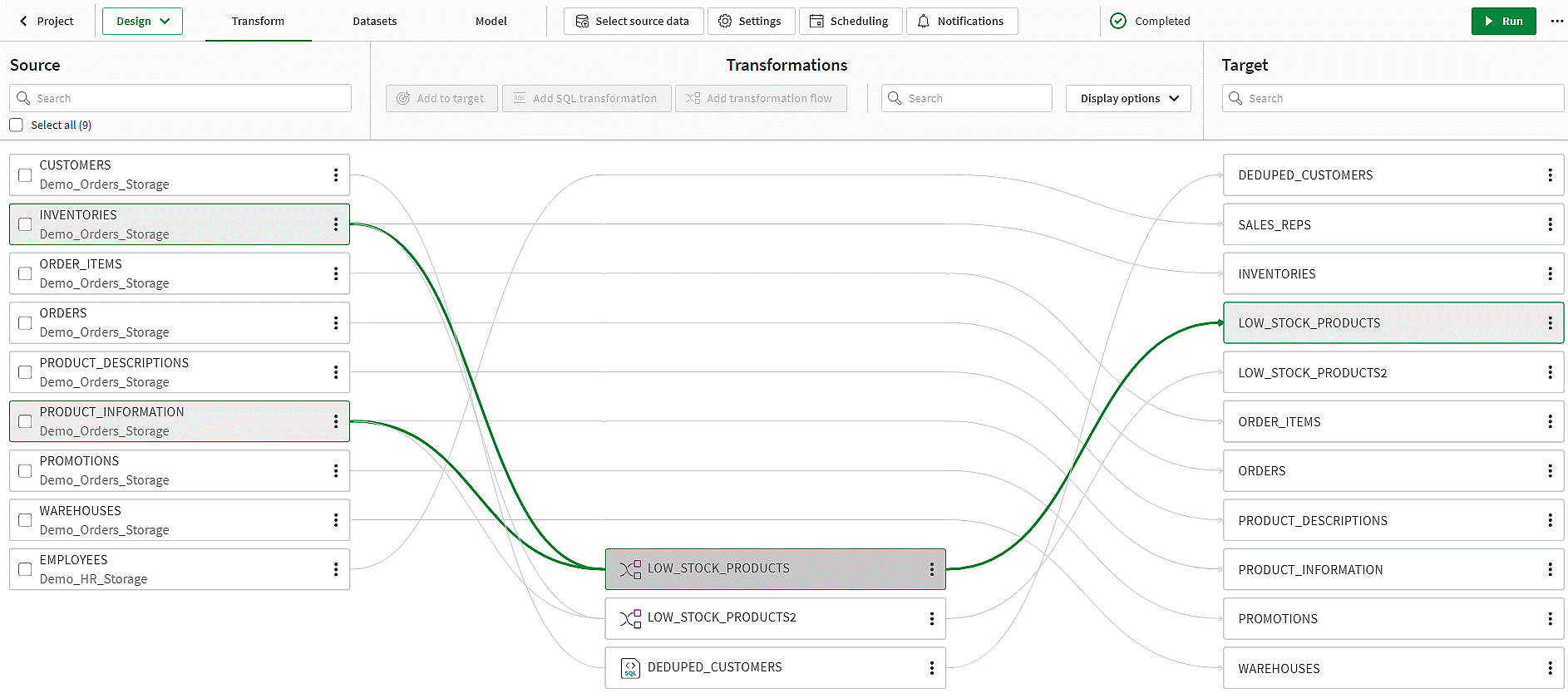
This view lets you see the full dataset lineage, including transformation flows with multiple output datasets. Filters and display options are also available to adjust the view to your needs.
3. Target-based dataset model for transform and data mart tasks
To make pipeline design more flexible, we are introducing a new dataset model for transform and data mart tasks: the target-based model.
With this new model, dataset metadata is now decoupled from source metadata changes. Transform and data mart tasks are more self-contained, letting you control the effect of source metadata changes.
Target datasets are now explicitly mapped from the source datasets. If a column is added from the source, or removed, it is not automatically propagated to the next downstream task anymore. Instead, you will be able to adjust the mappings according to your needs. You can also change the column order and replace the data source as needed.
Ingestion-type tasks, such as landing and storage, remain on the source-based dataset model.
4. Table recreation enhancements
In some cases, a change in the source data might require the target tables to be recreated (for example, if you need to change the target schema). Qlik Talend Cloud pipelines provide the ability to recreate the target datasets through the Recreate tables option. Previously, executing a recreate would also require tables in downstream data tasks to be recreated. This behavior has changed to allow recreation of tables in a data pipeline without needing to recreate tables in the downstream task. When recreating a table, the downstream task will react as if a truncate and reload action occurred on the source datasets.
5. Support for retrieving metadata from multiple tables in parallel
In previous versions, refreshing the metadata on an existing dataset or a newly added dataset would sometimes fail with an error. This enhancement ensures that metadata can be retrieved from multiple tables in parallel without any issue.
6. Data products catalog now generally available
With Qlik Talend Cloud, users can unlock data value through data products, a unique product-centric approach to streamlining end-to-end data management.
Product-centric approach in data management
Data products are valuable because data product teams can quickly produce high-quality, curated, domain-centric data assets, that can be easily accessed by data consumers and leveraged in several business use cases across the organization. This closes the gap between what data producers are putting together and what data consumers need. Just like real products, data products are built iteratively and have a lifecycle – from creating a data product to managing the quality of the data product, activating it into the data marketplace, and deactivating it when they are no longer needed.
Key Features
Qlik Talend Cloud brings together an integrated data management experience – from data integration to transformation, data quality, and governance. The data product catalog in Qlik Talend Cloud offers several key capabilities to manage the data product lifecycle end-to-end.
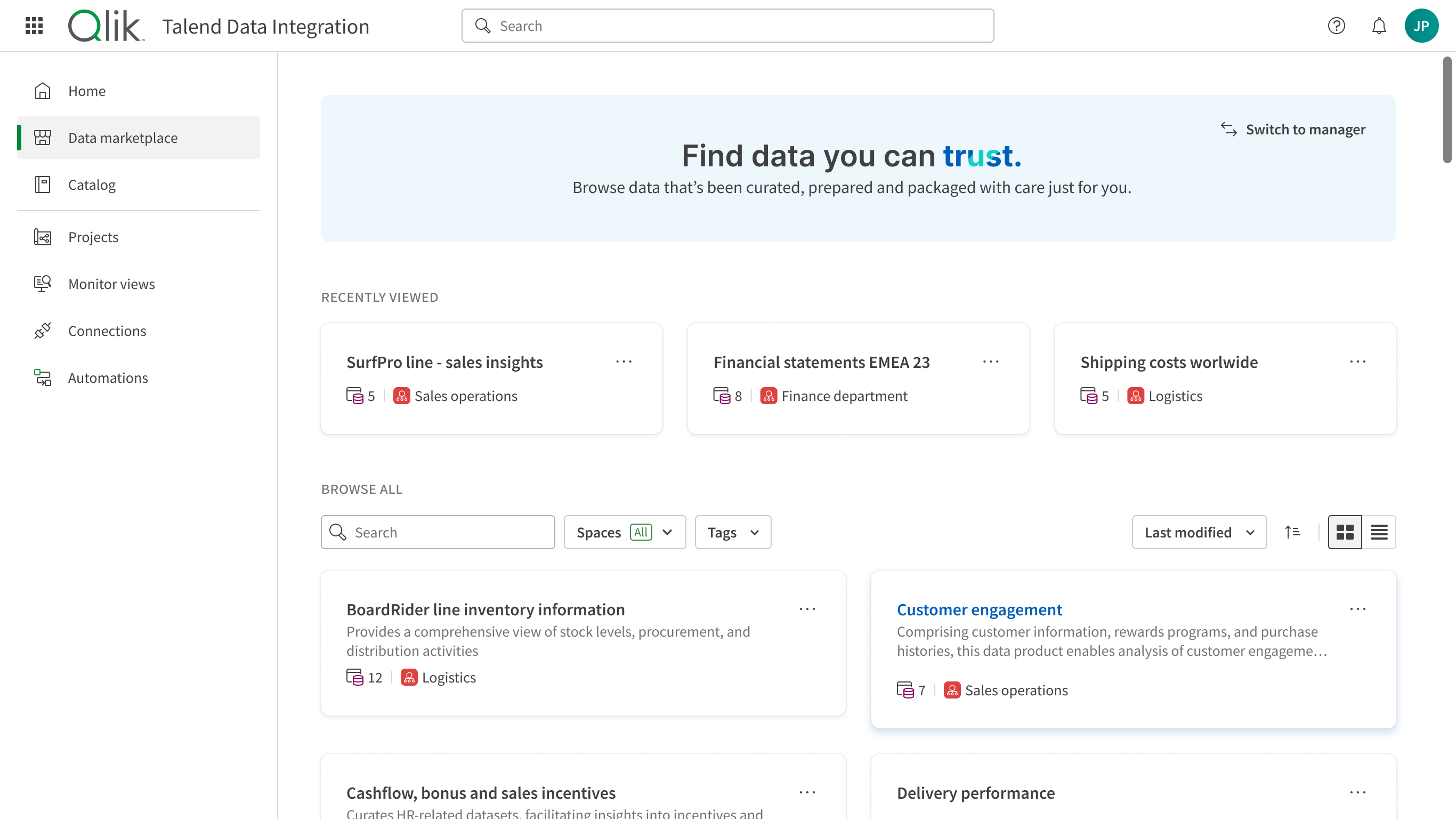
7. AI processor for transformation flows
A new processor has been introduced in transformation flows to make it easy to leverage your Databricks platform’s AI capabilities. The AI processor includes seven state-of-the-art generative AI functions:
Qlik Cloud July 2024: what’s new – read here.
Any questions please contact our consultants. Responding in one working day.
